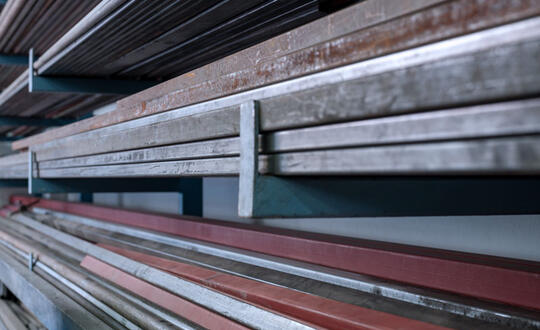
Following the Grenfell fire, the UK government and construction industry has rightly focussed on the review and regulation of building safety. There has been less focus on the potential impact of Brexit on the regulation of construction materials, although some significant steps are being taken in this area in conjunction with the building safety changes.
Florian van Schewick, Counsel at Redeker Sellner Dahs and Emily Leonard, Managing Associate at Womble Bond Dickinson consider the different approaches to regulation of construction materials in Germany and the UK.
The UK's current regulatory framework
The UK used to be subject to the same European standards on construction products as Germany under the EU Regulation No 305/2011 (the "2011 EU Regulation").
However, following the Construction Products (Amendment etc.) (EU Exit) Regulations 2019 (SI 2019/465) (the "2019 Regulations"), the 2011 EU Regulation requirements converted into a UK regime[1].
But what does this mean? In brief:
- All existing harmonised EU standards are now defined as UK "designated standards"
- Goods with the EU's CE mark[2] and placed on the market before 31 December 2020 can continue to circulate, whether they are in the UK or the EU
- UK bodies that operated under the 2011 EU Regulations as "notified bodies" should be granted UK "approved body" status and listed on a new database ("approved bodies" can undertake conformity activity for UK designated standards).
A different route for the UK
As the UK diverges from the European standards, there are several building safety and regulatory changes underway. Four key changes for products being placed on the UK market (or parts of the UK as applicable) are:
1. CE Marking will no longer be recognised
CE marking will not be recognised after 31 December 2024.
Businesses are encouraged to use the new UK Conformity Assessed (UKCA) marking as soon as possible. UKCA marking only applies to England, Scotland and Wales.
In June 2022, guidance was published to ease the transition (such guidance was further updated on 14 November 2022). This guidance confirmed that manufacturers of certain construction products, tested by an EU notified body before 31 December 2024, could obtain a UKCA mark without having to re-test.
2. A new National Construction Products Regulator
In January 2021, the UK government announced further plans for a new National Construction Products Regulator (NCPR), operating within the Office for Product Safety and Standards, stating that the new regulator would have powers to:
- Ensure homes are built from safe materials
- Remove any product from the market that presents a significant safety risk
- Prosecute any companies in breach of the rules on product safety
- Provide advice to support the industry and improve compliance, as well as providing technical advice to the government.
Businesses will also have a duty to ensure that their products are safe before being sold, in addition to the current requirements for testing against safety standards.
The NCPR is one of three bodies created by the Building Safety Act 2022 which came into force on 28 June 2022 (BSA 2022) for the new building safety regime. The other bodies are the Building Safety Regulator (overseeing the safety of high-rise buildings) and the New Homes Ombudsman (for relevant owners of buildings).
3. A new Construction Products Standards Committee
In April 2020, the UK government announced that it would set up a Construction Products Standards Committee (CPSC), comprised of technical experts and academics, an announcement it re-committed to in July 2021.[3]
This will involve advising on the construction products testing regime and developing the standards of third-party certification. It will also adopt the role undertaken by the European Commission in advising whether voluntary industry standards for construction products should become UK regulatory standards.
On 5 July 2021, the UK government confirmed it was engaging with the industry to identify areas of poor practice that the CPSC would seek to address.
4. Enhancing the regulatory regime for construction products
Provisions on liabilities and regulation in relation to construction products are set out in the BSA 2022 (Sections 147 to 151).
In terms of liabilities, this includes for example the manufacturing of an inherently defective product, failing to comply with certain construction product requirements, or making a misleading statement. "Construction product requirement" under Sections 147 to 149 of the BSA 2022, means a requirement under:
- The "construction products regulations" (see below)
- The 2011 EU Regulations, or
- The 2019 Regulations.
All construction products in the UK will fall under the new regulatory regime for construction products.
Section 146 and Schedule 11 of the BSA 2022 give the Secretary of State delegated power to make the "construction product regulations". Whilst a draft of these regulations was previously published, those have been withdrawn and the latest version is awaited.
This is the position in the UK, but 2.5 years after Brexit, what is the comparative position in Germany and the EU? Florian van Schewick of Redeker Sellner Dahs, WBD's alliance partner in Germany, provides his thoughts.
Case study: Regulation of construction products in Germany and the EU
Germany takes a relatively strict approach to the regulation of construction products. In this context, the division of competences between the European Union (free movement of goods) and the Member States (construction safety) repeatedly leads to conflicts and friction. The key takeaways are set out below.
2. Harmonised construction products
In recognition of the Member States' competence to regulate construction safety, EU Regulation No 305/2011 provides that only the procedures for assessing product performance are harmonised. The product performance is stated in the declaration of performance and confirmed with the CE marking on the product.
On that basis, the Member States may specify which product performance is required for which intended use. By way of example, the European level regulations prescribe how the fire resistance of a ceiling system is determined. At national level, Member States may prescribe, for example, a fire resistance of 30 minutes is required for a garage, or 120 minutes for a high-rise building. Unlike in other product areas, EU Regulation No 305/2011 thus does not specify a uniform level of protection. Instead, a kind of common technical language is specified. The basic requirements for construction works mentioned in the Regulation provide a foundational criteria against which technical specifications can be harmonised across Member States.
This system leads to problems if the harmonised technical specifications under the Regulation do not provide assessment procedures for particular essential characteristics. For example, with respect to the emission of hazardous substances into indoor air, the European Court of Justice has ruled that Member States may not adopt additional preventive national regulations (Case C100/13), and are instead referred to the procedures of EU Regulation No 305/2011, which have proven to be ineffective and impracticable.
It should also be emphasised that EU Regulation No 305/2011 does not allow CE marking for all construction products. A declaration of performance is only possible if there is also a corresponding harmonised technical specification (e.g. a harmonised standard). EU Regulation No 305/2011 thus also deviates in this respect from other product areas (e.g. machinery), where in principle all products must be provided with CE marking.
This regulatory approach also leaves room for national product legislation. The building codes of the Länder (German states) therefore contain detailed regulations for construction products and their use. In particular, technical standards for construction products are referenced in legislation as technical building regulations and are thus binding. In cases where there are no technical building regulations and also no generally recognised technical rules, products must go through one of several different product approval procedures in order to be used in Germany. The responsible authorities are the building authorities of the Länder, the Deutsches Institut für Bautechnik (a central authority of the Länder) or recognised testing bodies.
Similar to the European level, manufacturers must set up a factory production control and, if necessary, involve a recognised body.
A problematic issue is where the European regulations for construction products with CE marking and the German national system diverge. According to the jurisprudence of the European Court of Justice, national approval procedures for such construction products are generally inadmissible. However, the German Länder claim the right to impose their own regulation of construction products in combination with EU regulations. This often leads to the implementation of additional requirements and approval procedures. A final legal decision on this position is pending.
2. Non-harmonised construction products
For non-harmonised construction products from other EU countries, the free movement of goods and the principle of mutual recognition apply. Impediments are inadmissible here, unless they can be justified on grounds of public interest and the resulting legislation is proportionate to the EU objective of free movement of goods. Nevertheless, the German construction supervisory authorities still tend to demand extensive evidence of compliance.
3. Monitoring of conformity of construction products
In terms of monitoring, construction products are difficult to recognise as defective once they have been installed and any subsequent remedying of defective products (after installation) often proves difficult.
- On a European level, the EU Regulation No 305/2011 requirements are mainly monitored within the framework of market surveillance. For this purpose, corresponding controls in the market and remedial mechanisms are provided, the enforcement of which are primarily directed at the manufacturer and the supply chain.
- In contrast, on a national level in Germany, the monitoring of nationally regulated construction products – in addition to the approval procedures – is primarily carried out on the construction sites themselves. As a matter of principle, non-regulated or non-approved construction products may not be used. The outcome of the monitoring is primarily directed against the principal and the other parties involved in the construction works. This is particularly problematic for construction products with CE marking, against which the procedures of European market surveillance have been applied, but which are now subjected to further scrutiny from additional national regulations.
4. Future changes ahead
The European Commission has recently submitted a proposal to revise EU Regulation No 305/2011 which is currently working its way through the legislative process. Among other things, it is proposed that general product safety requirements will be included in the Regulation (as with other regulation on product harmonisation) as well as performance assessment criteria.
Furthermore, it is envisaged that mechanisms will be introduced to close gaps in the harmonised standards and that supplementary regulations will be issued. How the various regulatory areas interface each other will also be determined (e.g. in the context of the European Green Deal).
Learning from the European and German experience, the following points should be taken into account:
- Article 6(1) of EU Regulation No 305/2011 which requires that: "The declaration of performance shall express the performance of construction products in relation to the essential characteristics of those products in accordance with the relevant harmonised technical specifications" requires redefining for those products where there is no corresponding harmonised technical specification against which to assess the essential characteristics of the products.
- A system of exhaustive regulation requires considerable capacity on the part of the authorities, standardisation organisations and testing bodies. The effort to compile the applicable standards and supplement them with additional regulations, if necessary, is considerable. There is a need for ongoing improvement in this capacity.
- Since not all products are standardised, criteria and procedures must be created for evaluating deviating or innovative solutions.
- The interfaces between different evaluation and regulatory models cause considerable friction. This is especially true in an area where the differences between national and European regulatory approaches are strong. This is therefore an area which needs further work as to how to deal with this pragmatically.
Comment
It is clear that there are challenges on both the UK and German sides of regulating construction products.
With the UK moving away from the long established CE marking for products within the UK markets, there have been concerns in the industry regarding the additional costs of UKCA testing and the limited number of testing houses currently based in the UK. The recent decision by the UK government, which avoids the need to retest certain construction products that have already been tested by an EU notified body before 31 December 2024, provides some comfort. Having said that, the Construction Products Association remains concerned about the available capacity of the testing houses[4][5].
As is the case in Germany, regulation requires significant capacity on the part of the authorities, various organisations, and testing bodies. It is also clear from the above observations in Germany that it is important for the various interfaces between the different organisations and relevant laws and regulations to be addressed. In the UK, we anticipate a close relationship between the National Construction Products Regulator and the new Building Safety Regulator, established under the BSA 2022 and we still await further detail as to how the Construction Products Standards Committee will function. For EU Member States time will also tell how the new revisions to EU Regulation No 305/2011 will work in practice. Achieving a content partnership between European level and national level regulatory approaches remains a challenge.
Co-authored by Redeker Sellner Dahs and Womble Bond Dickinson who are Strategic Alliance Partners. Edited by Olivia Maurier of Womble Bond Dickinson.
Redeker Sellner Dahs is a leading firm in construction law, with expertise in complex, large-scale projects. Florian van Schewick is recognised by Legal 500 as a 'Rising Star' in business administrative law and has acted as counsel for the Federal Republic of Germany before the European Court of Justice in an action against four decisions by the European Commission in the area of construction products law (ECJ, cases C-475/19 P and C-688/19 P; EGC, cases T 229/17 and T 53/18).
WBD are proud to have one of the largest full service construction and engineering teams in the sector, operating in London and across the UK, and beyond. Emily Leonard is recognised by Legal 500 as a 'Rising Star' for contentious construction in London and has experience in a wide range of dispute resolution, including arbitration, litigation, and adjudication.
Co-authored by Redeker Sellner Dahs, with case study by Florian van Schewick (Counsel).
[1] On 26 November 2020, the Construction Products (Amendment etc) (EU Exit) Regulations 2020 (SI 2020/1359) amended the 2019 Regulations so that they have effect in Great Britain only. In Northern Ireland, EU law for construction products continues to apply. Both Regulations came into force on 31 December 2020.
[2] The EU's CE mark is a mark introduced by the European product harmonisation legislation; CE= Communauté or Conformité Européenne
[3] Building Safety Bill: Government Response to Pre-Legislative Scrutiny
[4] UKCA Marking (constructionproducts.org.uk)
[5] Outstanding area of concern not resolved by the UK-EU Trade and Cooperation Agreement





